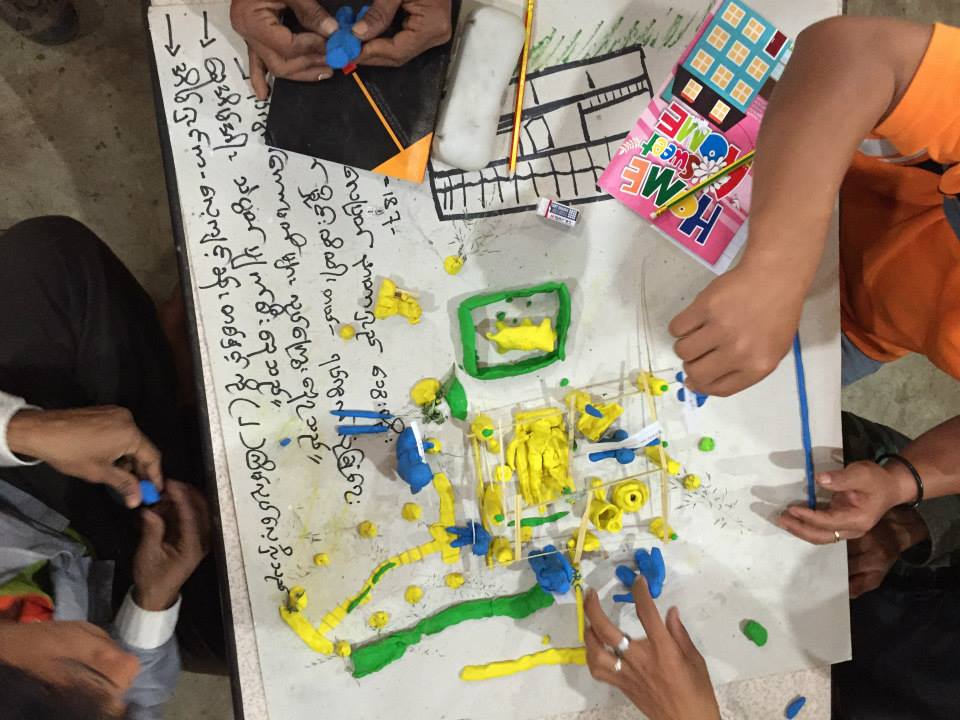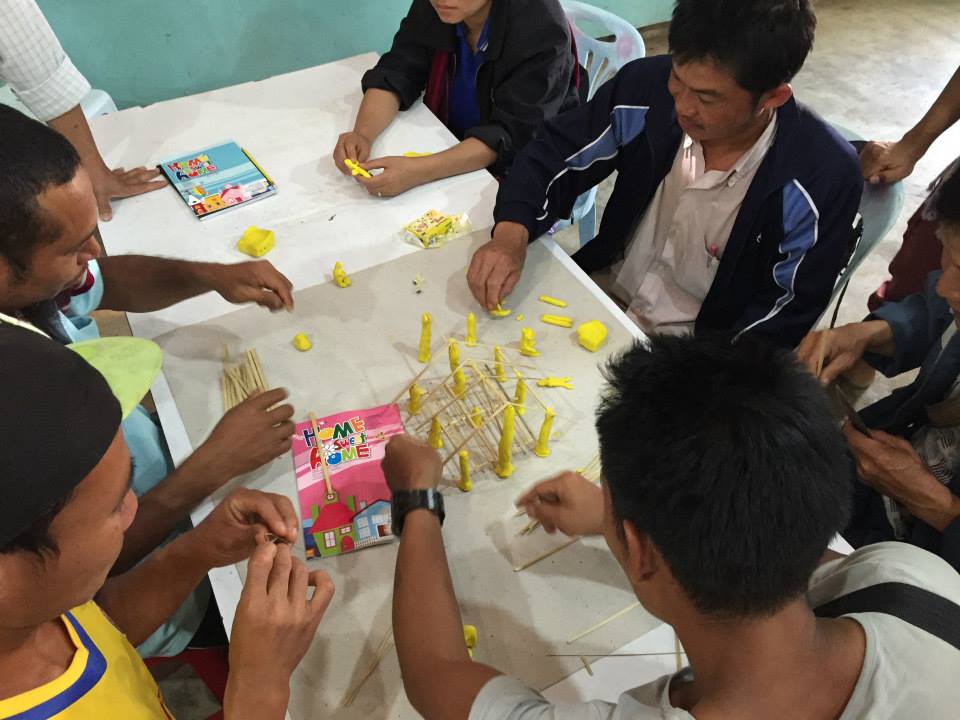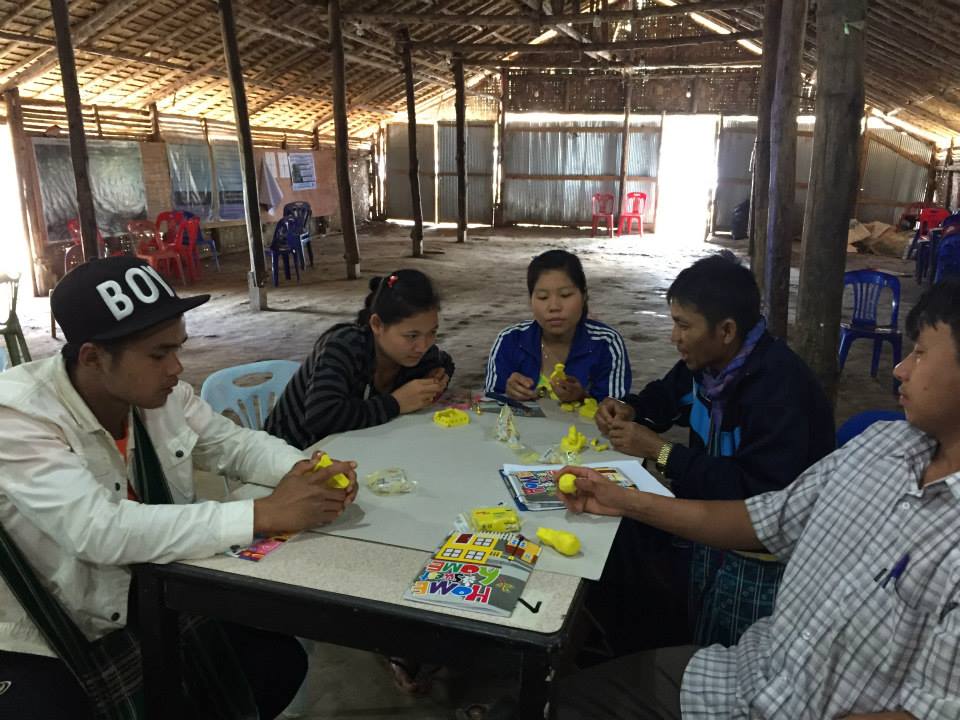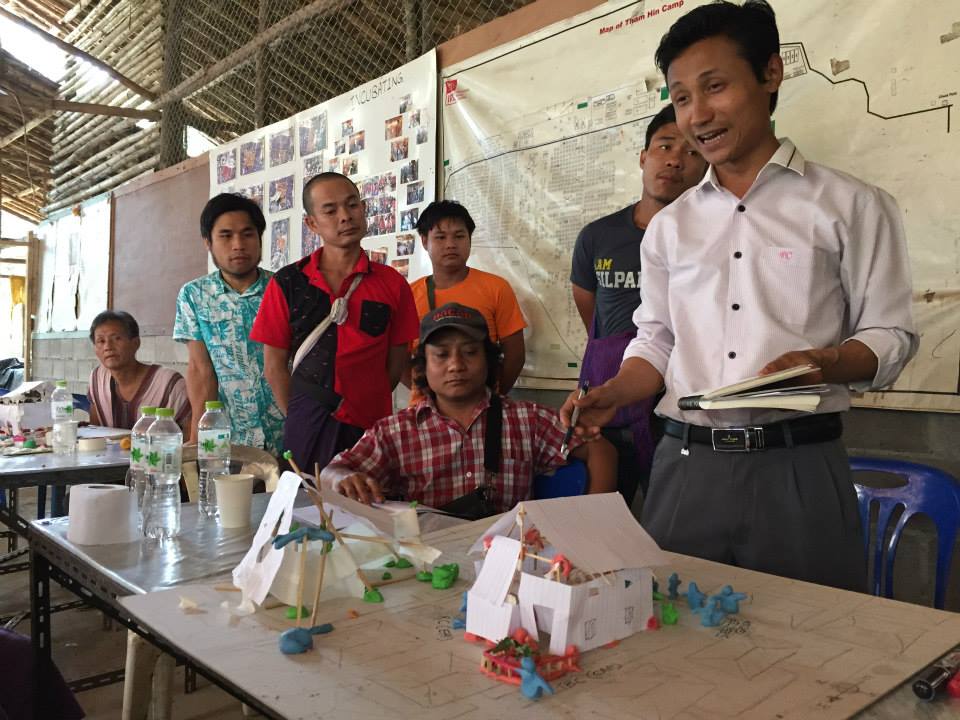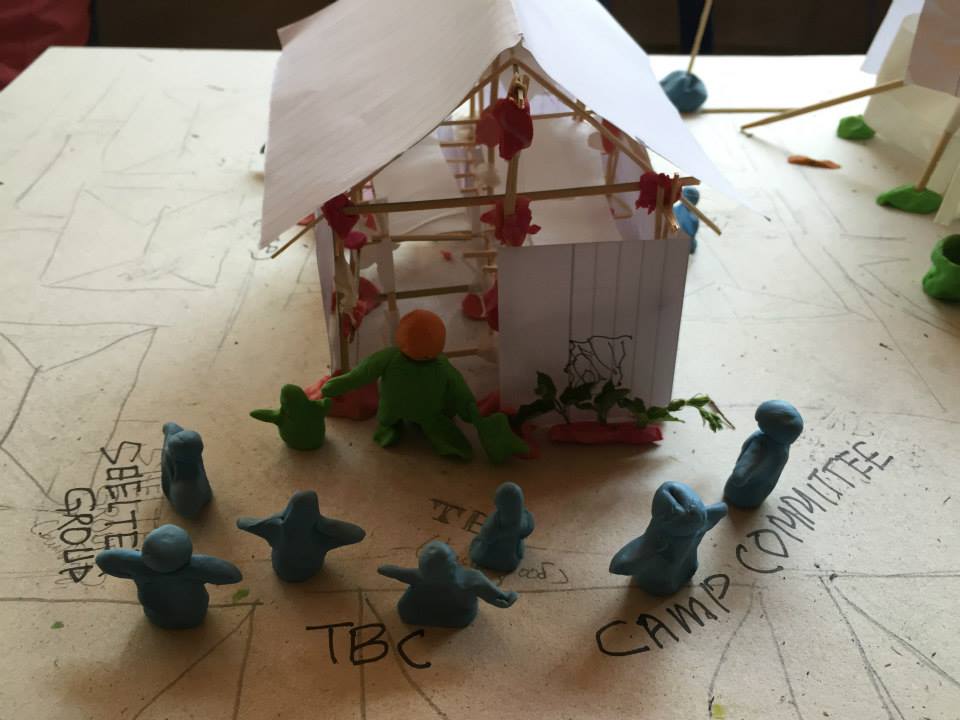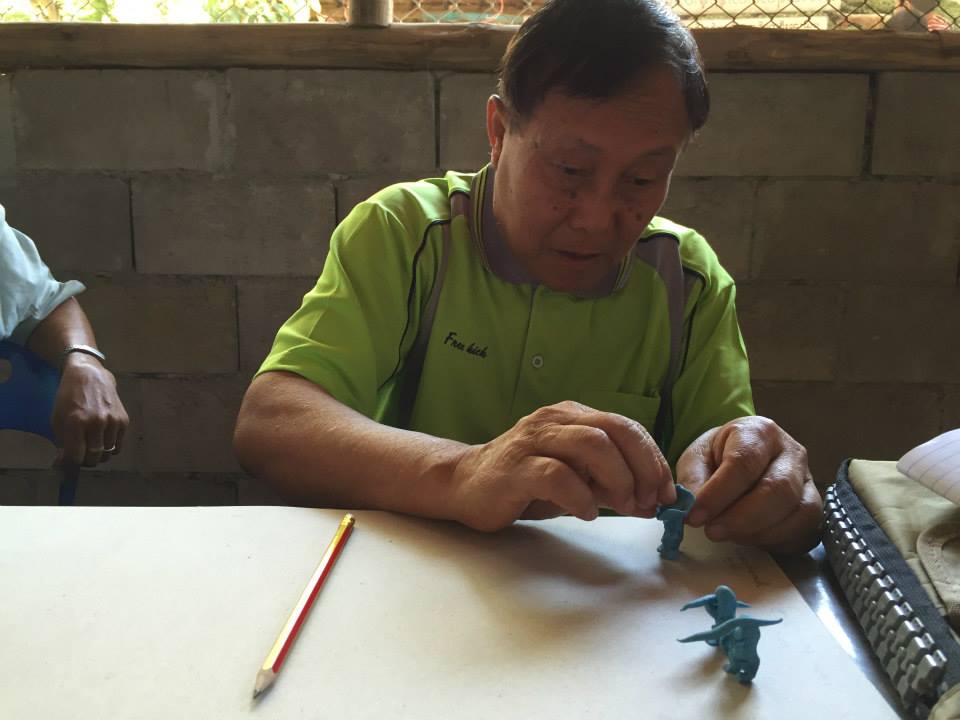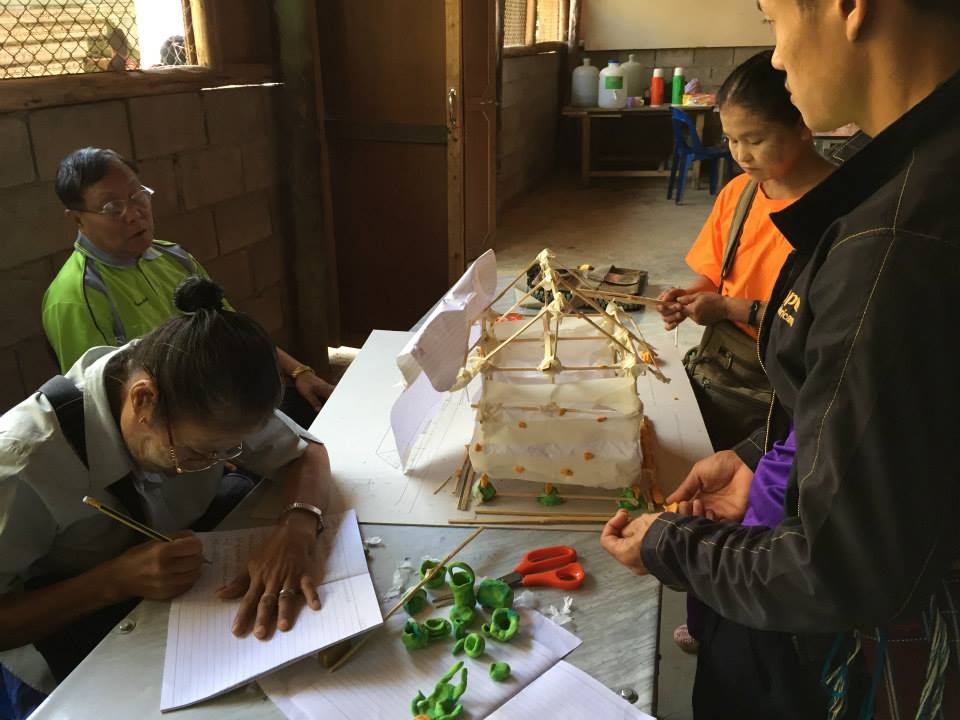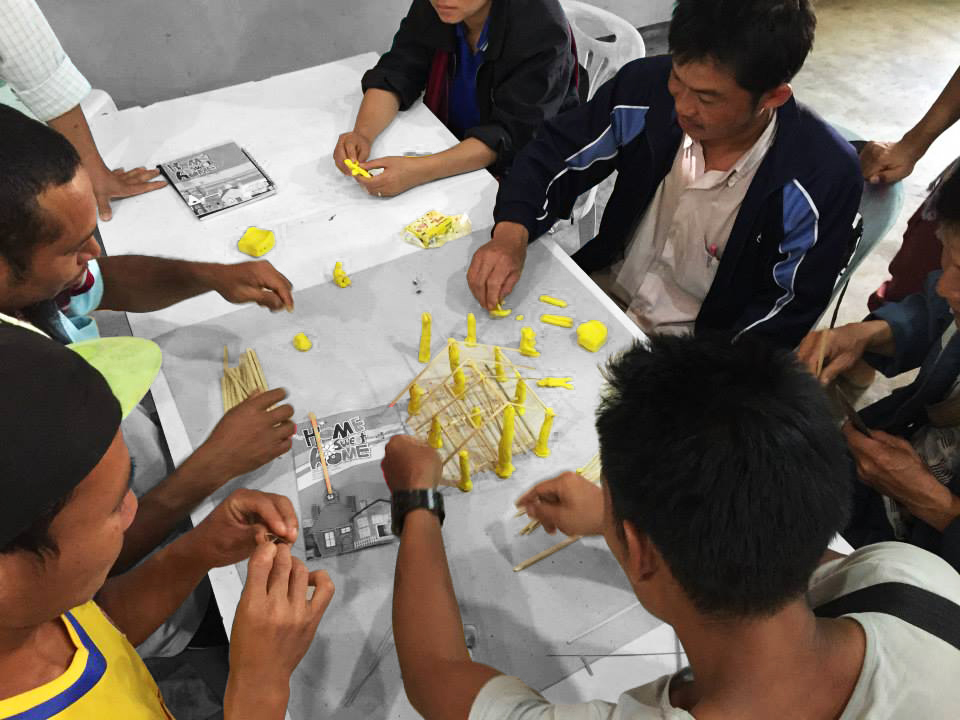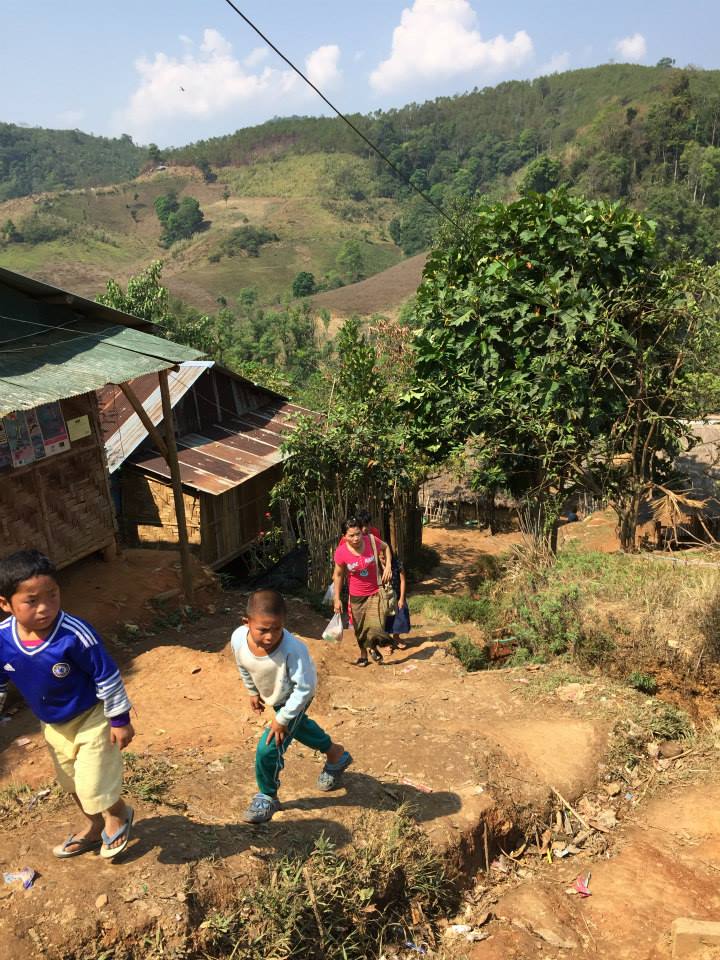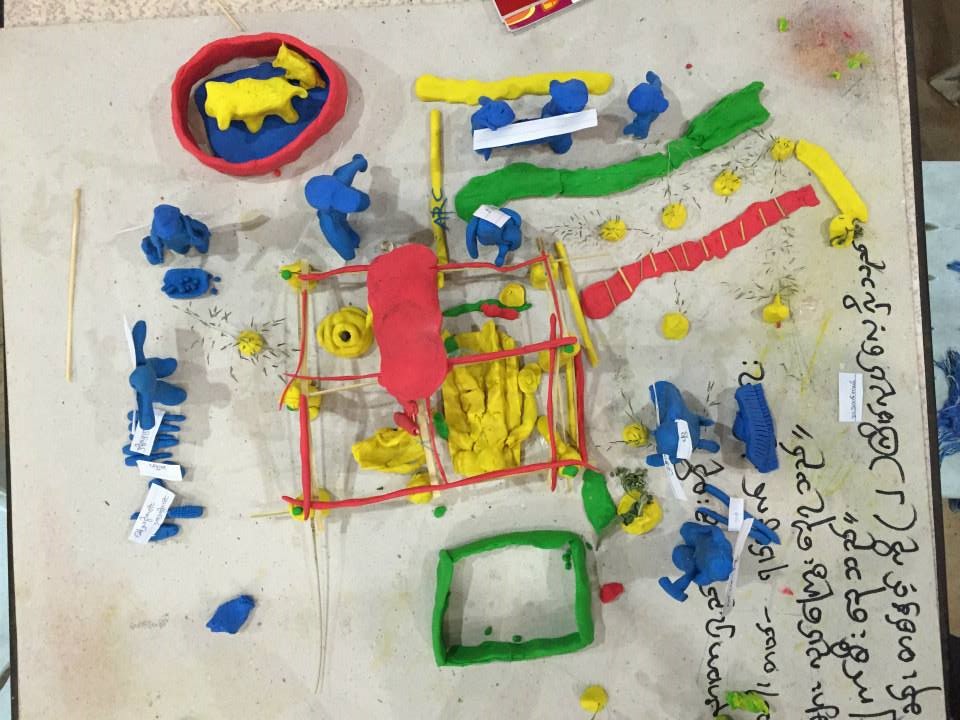 actions
actions
Design workshops in border refugee camps
Thailand has been the host of refugees fleeing conflict in Myanmar since the mid 1980s. Approximately 120.000 people currently live in 9 camps along the Thailand-Myanmar border, with each camp ranging in population from around 2000 to 50.000 people. Recent progress towards a Nationwide Ceasefire Agreement in Myanmar has greatly increased the prospect of voluntary repatriation of these refugees. However, at present, key stakeholders agree that conditions are not yet right for return.
In the past building materials were distributed annually to refugees in the camps, including bamboo, eucalyptus poles and roofing material. However, with rising prices and a reduction in budget, systems of assessment and collective decision making have been put into place for need-based distribution.
Openspace was invited by The Border Consortium (TBC) to carry out capacity building workshops with the camps’ shelter staff as part of their Shelter and Settlement’s Preparedness program. The overall objective of TBC is to strengthen settlement governance, leadership, and self-reliance with working groups, which can gradually lead towards transitioning of housing responsibilities over to the refugee communities themselves.
The main objective of the 2-day workshop was to strengthen understanding on assessing vulnerability, analyzing key challenges, identifying available resources and opportunities, as well as putting forward proposed actions to be taken.
The workshop started off with open discussions around what vulnerability means and what can make an individual or a household more vulnerable than others. This was then followed by discussions on the type of information to be collected and methods of data collection. Each team was then provided with a ‘case study’ household to visit and collect information.
The workshop used color-coded plasticine as the primary means of communication and representation. One color at a time is introduced to the participants. In this case yellow forms the base of the story - the context, the existing; green was used to highlight challenges and obstacles; blue/purple was used to represent available resources and opportunities; and red was provided last for the teams to create their ‘proposals’.
The teams were encouraged to explore and consider different possible solutions that use existing resources to reduce or remove some of the key challenges. For example: an elderly lady with difficulties of movement due to bad knees or back will find uneven or steep path to toilet a challenge. The solution can be to improve the quality of the path itself, install handrails, or provide her with a walking stick - any of these solutions can work, depending on resources and other contributing factors.
The teams then presented their ‘case study’ household, from context to challenges, to resources, and proposed solutions. Other teams were invited to ask questions and provide inputs after each presentation. As all architects are aware of, the first jury/crit is no easy walk in the park - and we certainly gave them a taste of it!
This is the second workshop since 2013 Openspace has facilitated for TBC, the willingness to learn and open-mindedness of the refugee people makes our job easy, and we enjoy exploring Karen cooking in the camps!
Most of the feedback we received has been appreciation for taking the time to explore the subjectivity of ‘vulnerability’ in detail prior to delivering ‘solutions’ rather than ticking boxes on assessment forms. I hope that we have provided them with new tools to approach obstacles and challenges that they will face in the future. And we wish best of luck on their onward journeys when the time comes. | Wan Sophonpanich
In the past building materials were distributed annually to refugees in the camps, including bamboo, eucalyptus poles and roofing material. However, with rising prices and a reduction in budget, systems of assessment and collective decision making have been put into place for need-based distribution.
Openspace was invited by The Border Consortium (TBC) to carry out capacity building workshops with the camps’ shelter staff as part of their Shelter and Settlement’s Preparedness program. The overall objective of TBC is to strengthen settlement governance, leadership, and self-reliance with working groups, which can gradually lead towards transitioning of housing responsibilities over to the refugee communities themselves.
The main objective of the 2-day workshop was to strengthen understanding on assessing vulnerability, analyzing key challenges, identifying available resources and opportunities, as well as putting forward proposed actions to be taken.
The workshop started off with open discussions around what vulnerability means and what can make an individual or a household more vulnerable than others. This was then followed by discussions on the type of information to be collected and methods of data collection. Each team was then provided with a ‘case study’ household to visit and collect information.
The workshop used color-coded plasticine as the primary means of communication and representation. One color at a time is introduced to the participants. In this case yellow forms the base of the story - the context, the existing; green was used to highlight challenges and obstacles; blue/purple was used to represent available resources and opportunities; and red was provided last for the teams to create their ‘proposals’.
The teams were encouraged to explore and consider different possible solutions that use existing resources to reduce or remove some of the key challenges. For example: an elderly lady with difficulties of movement due to bad knees or back will find uneven or steep path to toilet a challenge. The solution can be to improve the quality of the path itself, install handrails, or provide her with a walking stick - any of these solutions can work, depending on resources and other contributing factors.
The teams then presented their ‘case study’ household, from context to challenges, to resources, and proposed solutions. Other teams were invited to ask questions and provide inputs after each presentation. As all architects are aware of, the first jury/crit is no easy walk in the park - and we certainly gave them a taste of it!
This is the second workshop since 2013 Openspace has facilitated for TBC, the willingness to learn and open-mindedness of the refugee people makes our job easy, and we enjoy exploring Karen cooking in the camps!
Most of the feedback we received has been appreciation for taking the time to explore the subjectivity of ‘vulnerability’ in detail prior to delivering ‘solutions’ rather than ticking boxes on assessment forms. I hope that we have provided them with new tools to approach obstacles and challenges that they will face in the future. And we wish best of luck on their onward journeys when the time comes. | Wan Sophonpanich
Location:
Thailand

Team:
Openspace
Year:
2015
Design workshops in border refugee camps

